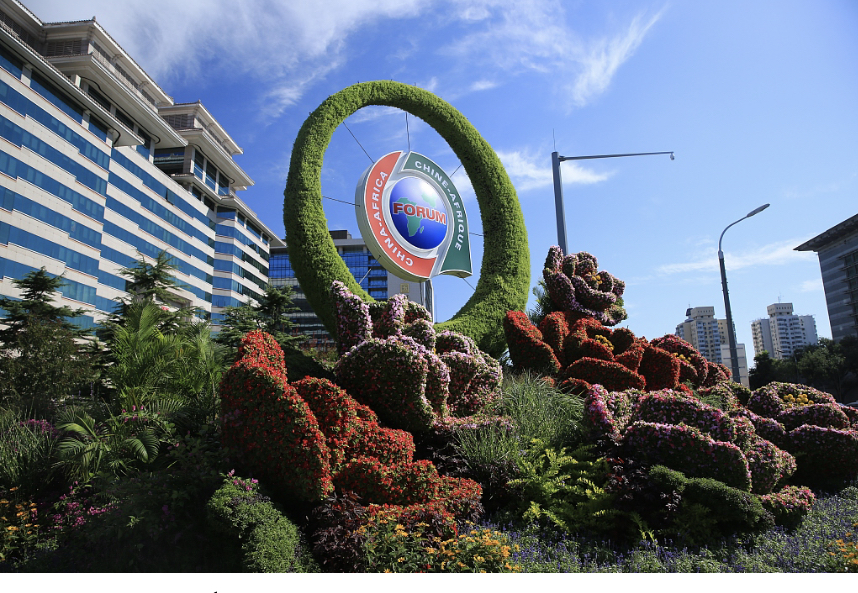Published: January 02,2022
By Douglas Okwatch
(Douglas Okwatch is a senior editor of CMG Africa based in Nairobi, Kenya)

A successful 20th Communist Party of China (CPC) congress that signaled continuity was the highlight for Africa as the curtains drew down on 2022— a generally turbulent year globally.
Steps towards recovery from the global Coronavirus pandemic were reversed. The Russia-Ukraine conflict touched off an energy crisis that set off the alarm bells on the cost of living.
Africa appeared badly hit.
The continent also witnessed heightened geopolitical activity. Africa hosted the global climate conference, COP 27, at Sharm El Sheikh, Egypt’s Red Sea port city. Loss and damage finally got on the agenda— a key take-away. A couple of military takeovers blotted the political landscape in West Africa. In Eastern DRC, civilians attacked UN troops stationed there, signaling fatigue with the world’s longest peacekeeping mission in an intractable conflict.
On a lighter and brighter side of things, Morocco became the first African country to reach the semi-finals of the FIFA World Cup in Qatar. Sports proved one more time to be a powerful tool of diplomacy and global unity.
Importantly, 2022 also once again brought to the fore the different styles of engagement China and the US deploy in Africa.
China demonstrated consistency. Under Trump decoupling. The Biden administration tried to repair the damage. His ad-hoc US-Africa Leaders Summit was an attempt at recovering lost ground.
Active since 2002, when it was established, the Forum on China-Africa Cooperation (FOCAC) exemplified China’s consistency. Through this mechanism, relations between China and Africa expanded and deepened. Trade flourished. So did foreign direct investment (FDI). The true hallmark of this cooperation has been infrastructure development. Equally consistent has been China’s Africa policy— one of non-interference. In more recent years China has agreed to sit on the dialogue table to help mediate Africa’s conflicts. It’s been doing this in South Sudan. The number of Chinese blue helmets in UN peacekeeping missions in Africa has also grown. The US still preferred a boots-on-the ground approach, Somalia being an example of this modus operandi. But even in the Horn these contrasting styles are evident. China, a more development-oriented approach, and the US militarization. China appointed a peace diplomat for the Horn.
The past year witnessed an escalation of geopolitical activity, a flurry of high-profile visits and whistle-stop diplomacy. King Philippe of Belgium paid a six-day visit to DRC, its former colony. A bizarre ritual of handing over the tooth of Patrice Lumumba, one of colonial Africa’s most promising leaders was the highlight of the visit. Lumumba was murdered in his prime. King Philippe didn’t offer an apology for Belgium’s atrocities in the Congo. Prince Charles, now King Charles III, also came calling. He was in Kigali, Rwanda, to preside over the Commonwealth Heads of Government meeting— a belated, rather feeble attempt to resurrect Empire. He got a little bite of the cherry, when two African countries, previously not British colonies, joined the Club.
France suffered a major setback after Mali ordered its troops out. Francafrique was on the ropes, Emmanuel Macron, the French President, visited more than once. His visits to Algeria, where he was quoted saying “a painful shared past prevents us looking to the future together” were perhaps the most remarkable of French decline in Africa.
Sergei Lavrov, Russia’s now all-too-familiar Foreign Minister and Vladimir Putin’s most trusted assistant abroad also came to Africa. So did Antony Blinken, the US Secretary of State.
An attempt to divide Africa, Cold War style, over the Russia-Ukraine conflict largely flopped. African countries refused to be dragged into geopolitical alignments.
A bad US proposed legislation targeting Russia in Africa and trying to push African countries doing business with Russia into a “you’re either with us or them…” situation, failed to sail through the US Senate.
The year ahead is full of promise but also uncertainty. Recession looms large. On the optimistic side, it’s the second year of doing business on Africa’s biggest trading platform, the Africa Continental Free Trade Area (AfCFTA).
Eight countries—Cameroon, Egypt, Ghana, Kenya, Mauritius, Rwanda, Tanzania and Tunisia—are already participating in the AfCFTA’s Guided Trade Initiative (GTI).
The $ 3 trillion borderless market, says UNCTAD in its 2021 Economic Development in Africa report, could be a game-changer.
Intra Africa trade stands low at just 14.4% of total African exports, according to UNCTAD, whose study also show 34% of households in Africa live below $1.9 per day.
Meanwhile, Benin, Gambia and Seychelles are the only African countries that allow visa free entry to all Africans.
But AfDB says travel has become more open to African citizens.
A 2021 Review of Maritime Transport by UNCTAD shows the AfCFTA has the potential to boost maritime trade in Africa, which goes hand in hand with ports and sea-going vessels, railways, airports and roads.
A decade since it was launched, the Belt and Road Initiative (BRI) offers in 2023 an opportunity to develop important regional and continent-wide transport infrastructure linkages critical for the movement goods and labour to markets in the AfCFTA.
 Africa -China Review Africa -China Cooperation and Transformation
Africa -China Review Africa -China Cooperation and Transformation
